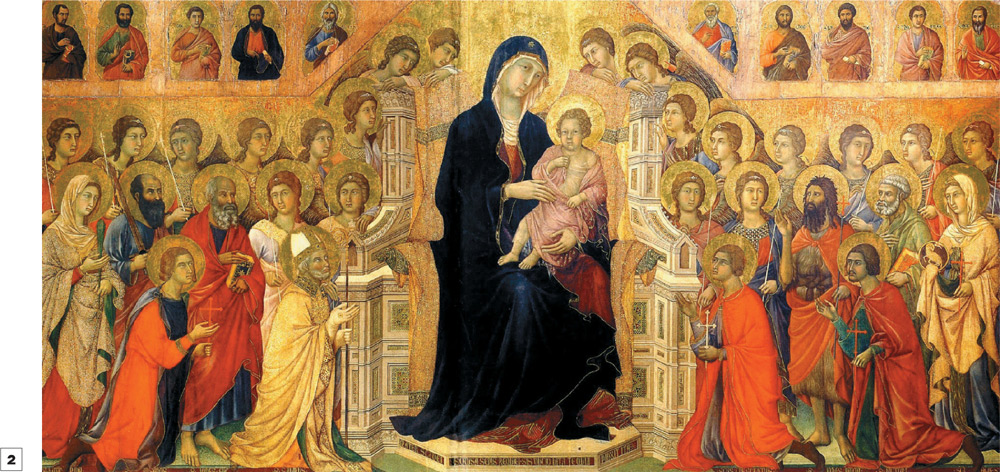 Mayan carving from Cancun showing the ruler Tajal Chan Ahk
Mayan carving from Cancun showing the ruler Tajal Chan AhkTHE IMPORTANCE OF RELATIVE SIZE
Hierarchical proportion is a convention in representational art in which figures are scaled relative to their importance or social status. Thus, in Egyptian art, pharaohs are generally shown as larger figures than their surrounding attendants. This convention extended for millennia across much of the world’s art, including Mayan, Persian, Indian, Carolingian, and Gothic art. Even in the Sienese painting of Duccio (1255–1319), the central religious figures in compositions are painted on a larger scale than the lower status attendants. This convention meshed well with other narrative advantages of a flat or shallow picture space. Objects need not be made larger or smaller depending on their distance from the viewer. And they can be stacked up to be seen in full, rather than being obliged to stand behind other elements.
When perspective arrived in the first part of the fifteenth century, the determination of scale was fixed by the geometry of the piece and new means had to be found to differentiate the status of figures in a composition. Artists quickly developed a vocabulary of placement, lighting, gesture, and clothing to indicate the relative importance of their subjects.
With the advent of modernism and a new interest in flat pictorial space, only a few artists have chosen to revisit the idea of hierarchical proportion. These include Marc Chagall (1887–1985), in whose works relative proportion and even the forces of gravity are often sacrificed to poetic license. It also appears in the work of the Columbian artist Fernando Botero (1932–), where it is sometimes used rhetorically to poke fun at the status of the ruling elite.
 Mayan carving from Cancun showing the ruler Tajal Chan Ahk
Mayan carving from Cancun showing the ruler Tajal Chan Ahk
 Duccio (1255–1319)
Duccio (1255–1319)
Maestà, c. 1308-11, Tempera and gold on panel, 84 × 157 in (213 × 400 cm)
